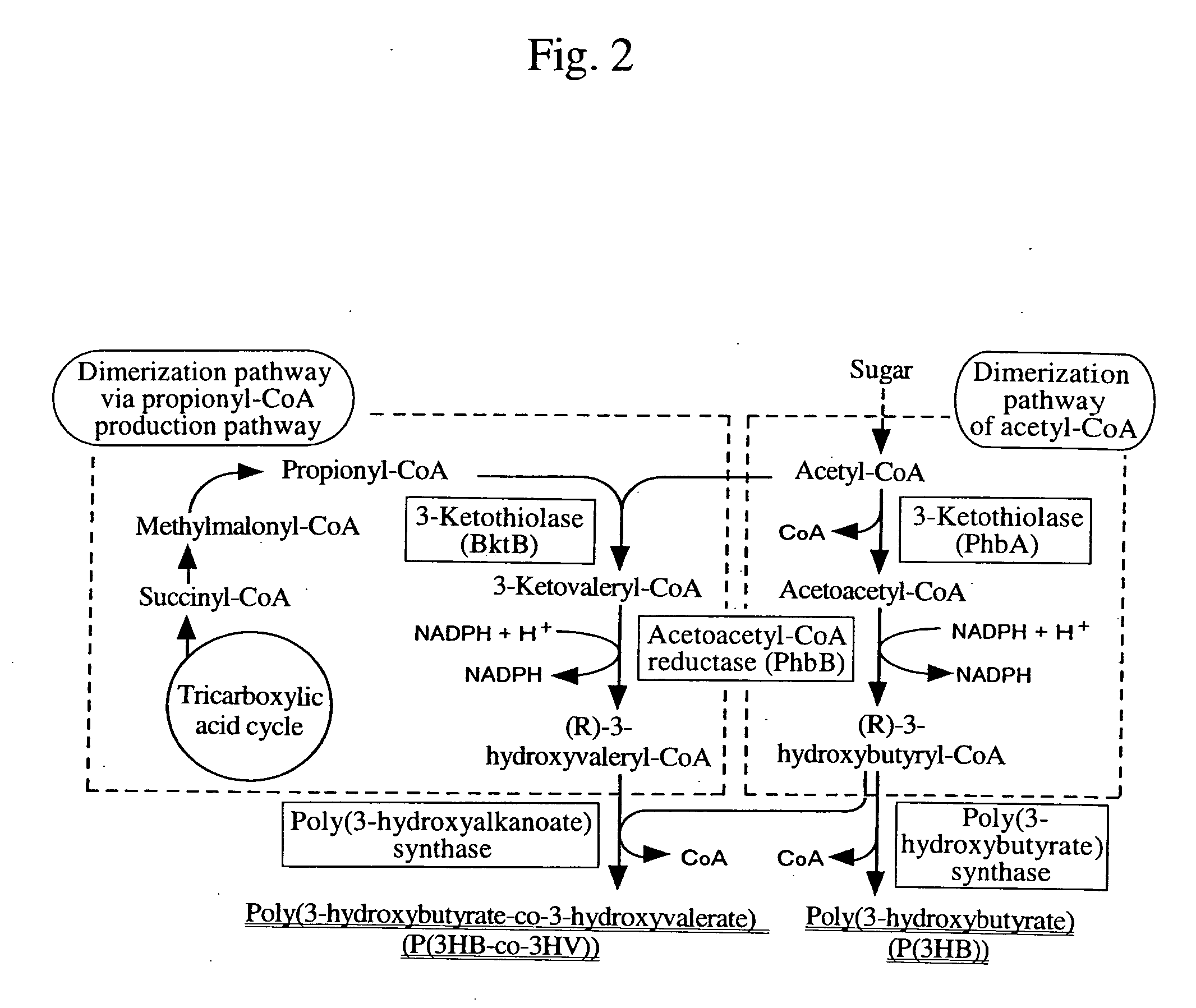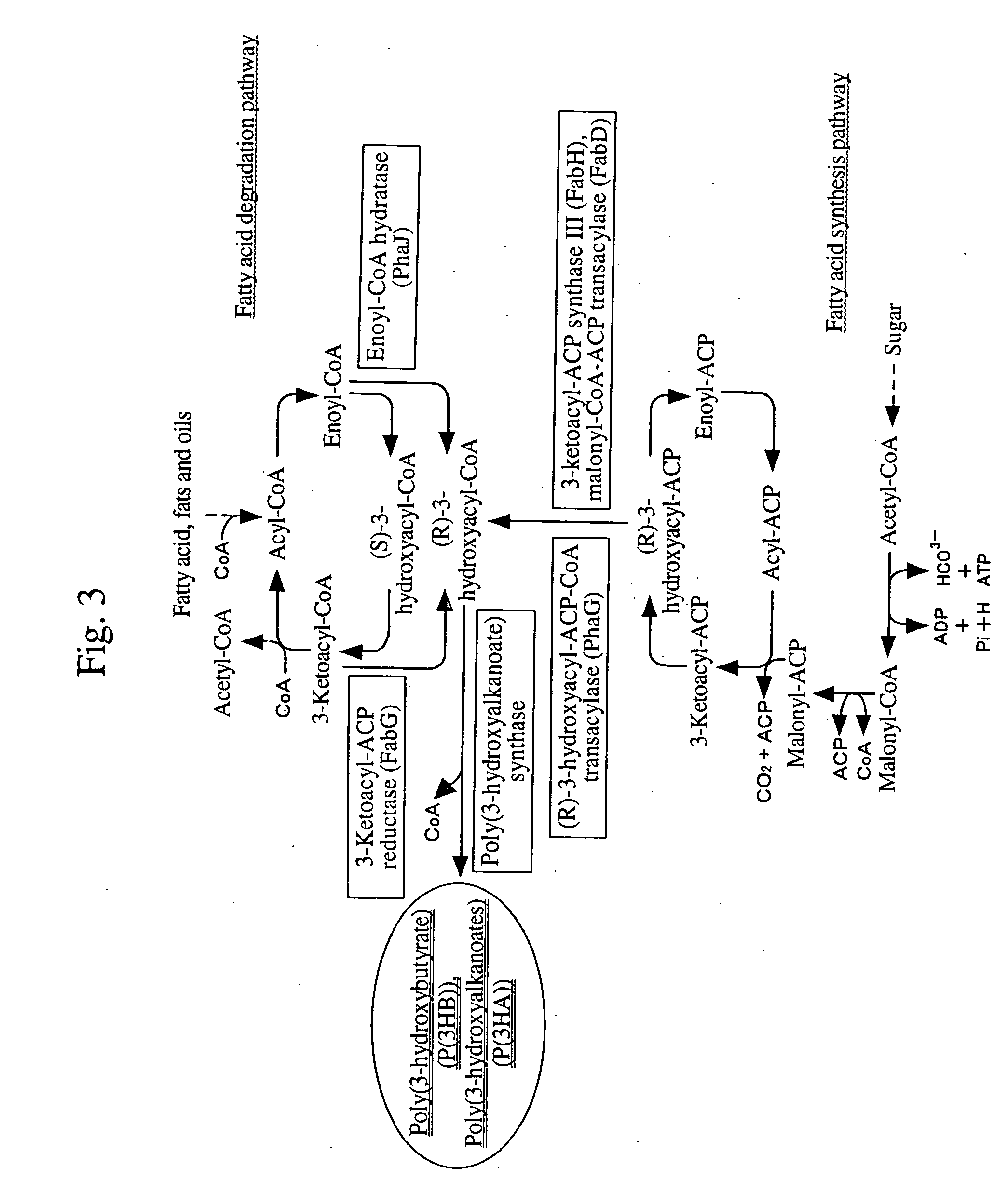Process for producing biodegradable polyester
- Summary
- Abstract
- Description
- Claims
- Application Information
AI Technical Summary
Problems solved by technology
Method used
Image
Examples
example 1
Alteration of poly(3-hydroxyalkanoate) Biosynthetic Enzyme by Error-Prone PCR
[0072] Random mutagenesis was introduced into the PstI-XhoI region in the gene (PhaCAC) encoding the poly(3-hydroxyalkanoate) biosynthetic enzyme derived from Aeromonas caviae FA440 by the error-prone PCR method. In the error-prone PCR method, an attempt was made to introduce mutations to the whole PstI-XhoI region in PhaCAC without limiting the place of the mutations by carrying out the PCR under a condition where the fidelity for the incorporation of substrates by polymerase is reduced, using the forward primer 5′-gctgctgcagaccaatc-3′ (SEQ ID No: 2) containing the restriction enzyme PstI recognition sequence and the reverse primer 5′-gcctcattttgcgcctcg-3′ (SEQ ID No: 3) containing the restriction enzyme XhoI recognition sequence, and using the plasmid vector pBSEE32phbAB (Refer to FIG. 5) containing PhaCAC as a template. For the PCR, the reaction solution was prepared so that it has the composition shown...
example 2
[0089]Escherichia coli LS5218 was transformed with mutant type PhaCAC contained in each of ES-50 and T3-11 obtained in Example 1. The accumulation level of P(3HB-co-3HHx) copolymer and the monomer composition composing P(3HB-co-3HHx) in the transformed Escherichia coli LS5218 were studied. It is known that Escherichia coli LS5218 can synthesize P(3HB-co-3HHx) copolymer from dodecanoate. Escherichia coli LS5218 was obtained from E. coli Genetic Stock Center (deposit number CGSC 6966).
[0090] Plasmid vector pBSEE32phbAB containing the mutant type PhaCAC was first purified for each of E2-50 and T3-11 obtained in Example 1 according to the method by Miller. The purified plasmid vector pBSEE32phbAB was then used to transform Escherichia coli LS5218. The transformed Escherichia coli LS5218 was cultured in a M9 medium containing 10 mM of dodecanoate and 50 μg / ml of ampicillin for 72 hours at 37° C. The composition of the M9 medium is shown in Table 2.
TABLE 2Na2HPO4.12H2O17.4gKH2PO43gNaCl...
PUM
| Property | Measurement | Unit |
|---|---|---|
| Length | aaaaa | aaaaa |
| Volume | aaaaa | aaaaa |
| Volume | aaaaa | aaaaa |
Abstract
Description
Claims
Application Information
 Login to View More
Login to View More - R&D
- Intellectual Property
- Life Sciences
- Materials
- Tech Scout
- Unparalleled Data Quality
- Higher Quality Content
- 60% Fewer Hallucinations
Browse by: Latest US Patents, China's latest patents, Technical Efficacy Thesaurus, Application Domain, Technology Topic, Popular Technical Reports.
© 2025 PatSnap. All rights reserved.Legal|Privacy policy|Modern Slavery Act Transparency Statement|Sitemap|About US| Contact US: help@patsnap.com



